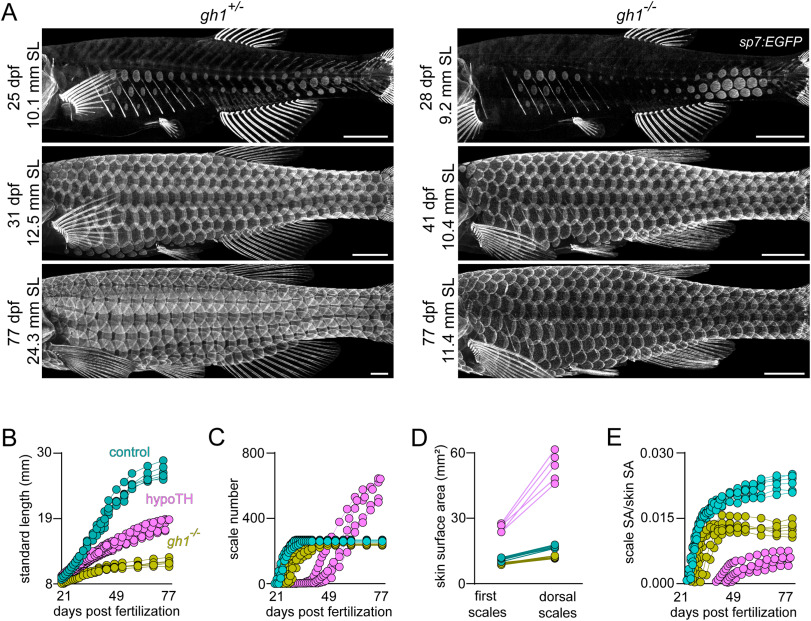Fig. 3 Normal patterning of squamation does not depend on body growth rate. (A) Mutants homozygous for a presumptive null allele of gh1 developed squamation similar to heterozygous siblings, visualized in sp7:EGFP transgenics in individual animals over time (n ?= ?8 each genotype). (B) gh1 mutants grew more slowly than heterozygous siblings or hypoTH fish. (C) gh1 mutants added scales more slowly than heterozygous controls (n ?= ?8, each condition), but more quickly than hypoTH animals (D). gh1 mutants had less body surface area expansion than heterozygous siblings (n ?= ?8), or hypoTH individuals. (E) Scale surface area (SA), as a proportion total skin SA over time shows that gh1 mutants have a specific defect in allometric scale growth, despite normal squamation pattern. hypoTH data in C and D is replotted from Fig. 1 for reference. Scale bars, (A) 1 ?mm.
Reprinted from Developmental Biology, 477, Aman, A.J., Kim, M., Saunders, L.M., Parichy, D.M., Thyroid hormone regulates abrupt skin morphogenesis during zebrafish postembryonic development, 205-218, Copyright (2021) with permission from Elsevier. Full text @ Dev. Biol.

